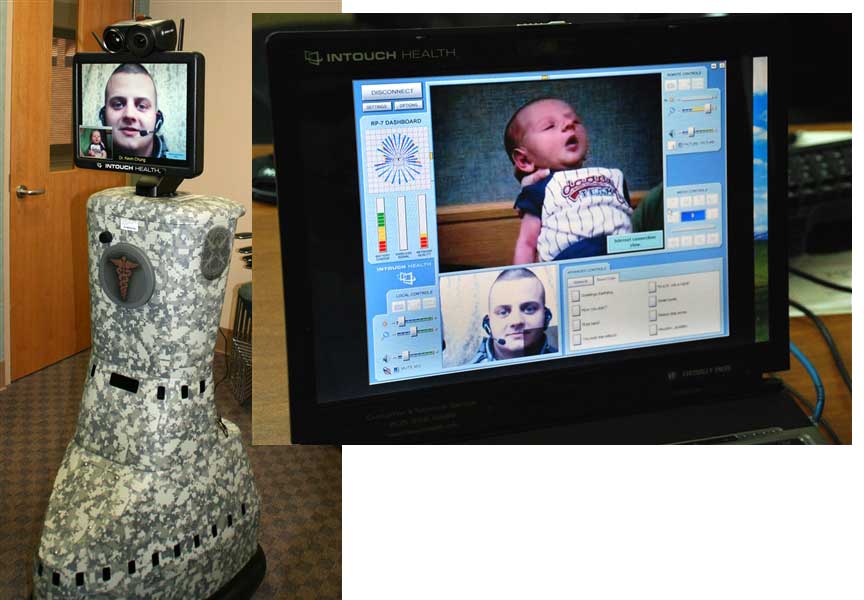U.S. Baby Meets 'Robot' Dad in Iraq

Army Staff Sgt. Erik Lloyd, who is stationed in Iraq, used a remote-controlled telepresence robot to see and interact with his family and seven day-old son in Texas.
The (rather good-looking) camo-enhanced device has a live video uplink and responds to remote control.
This technology has been around for quite a while (see the InTouch Companion: Medical Rounding Robot for a 2004 example), but this is the first time I've heard about it being used by distant dads to interact with their families.
There's something just a little bit creepy about this being the first interaction that a 7 day-old has with his father. However, the remotely-operated robot does present mostly the face and voice of the father, which is what the child will probably focus on. Also, there's no doubt that it provides a means for the dad to be a part of the stateside family life, which is great.
I prefer the more spartan HeadThere Giraffe Telepresence Robot for this particular usage; it has a kind of "mirror, mirror on the wall" look to it that seems more like a display and less like a person.
And if you really wanted to blow the kid's mind, I'd use the Robonaut Centaur, a NASA-designed lunar-roving robot, because you could use it to actually hold your new son with its robotic arms. I can just hear him a year or two later - "My dad has wheels and superpowers - how about your dad?"
When the baby grows up, he might have the chance to use a telepresence robot himself; see the PEBBLES Robot - Teleconferencing For Kids.
Get the world’s most fascinating discoveries delivered straight to your inbox.
(This Science Fiction in the News story used with permission of Technovelgy.com)
- Vote: Your Favorite Robot
- Quiz: Great Inventions
